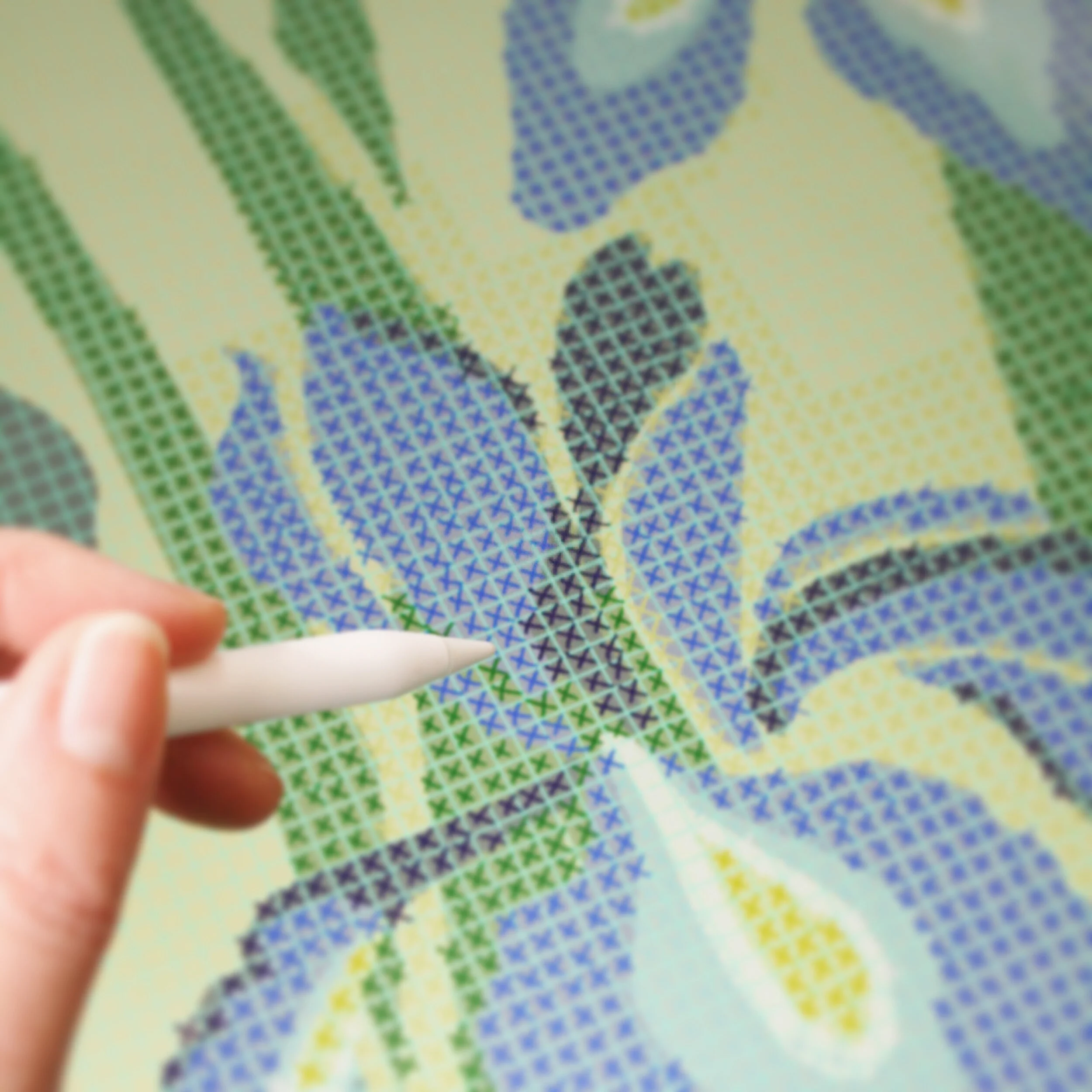Design Process
I am currently taking part in 'March Meet the Maker' on Instagram and the prompt for today is 'process' ... so I though it might be a good opportunity to share how I work.
I lot of the time my approach to design can be quite random. I spend a lot of time looking at things and I guess all the images ferment inside my mind and can sometimes just come to the surface as an idea for a new project. I also find the process of designing can spark new ideas. One of my key tools is to keep notebooks as the ideas tend to come faster than my poor fingers can work ... so if there is ever a dry patch I can simply look back to old ideas.
These irises are a project I started earlier in the week and I'm having to be slightly more organised than usual as the size and to a degree the style of the finished chunky cross stitch cushion has to sit comfortably with a nasturtium cushion I stitched last month. I was first drawn to irises after seeing a picture of a six panel screen by the Japanese artist Ohara Korin. I cannot replicate the gold leaf but the colour combinations and abstract shapes are so compelling.
For this project I spent some time simply looking at images of irises simply to get the shapes and colours in my head. I then drew a rough sketch on my iPad. This is such a flexible medium to work on as you can create layers, resize, move and very often delete elements to create the most pleasing composition.
I then overlay a grid at the correct scale and simply draw lots of x x x x ... It really is the same as transferring a design to squared paper with coloured pencils. This rough design is then plotted in the computer using Stitch RXP (there are lots of other software options available). At this stage it is really easy to switch different colour combinations in and out of the design - sometimes too many options!
Finally, I'll start stitching the sample - the canvas for this design is cut and about to be laced on the tapestry frame. Stitching very often involves a lot of unpicking as a pattern on the screen can look very different in tapestry wool, so colours continue to change throughout the process.
